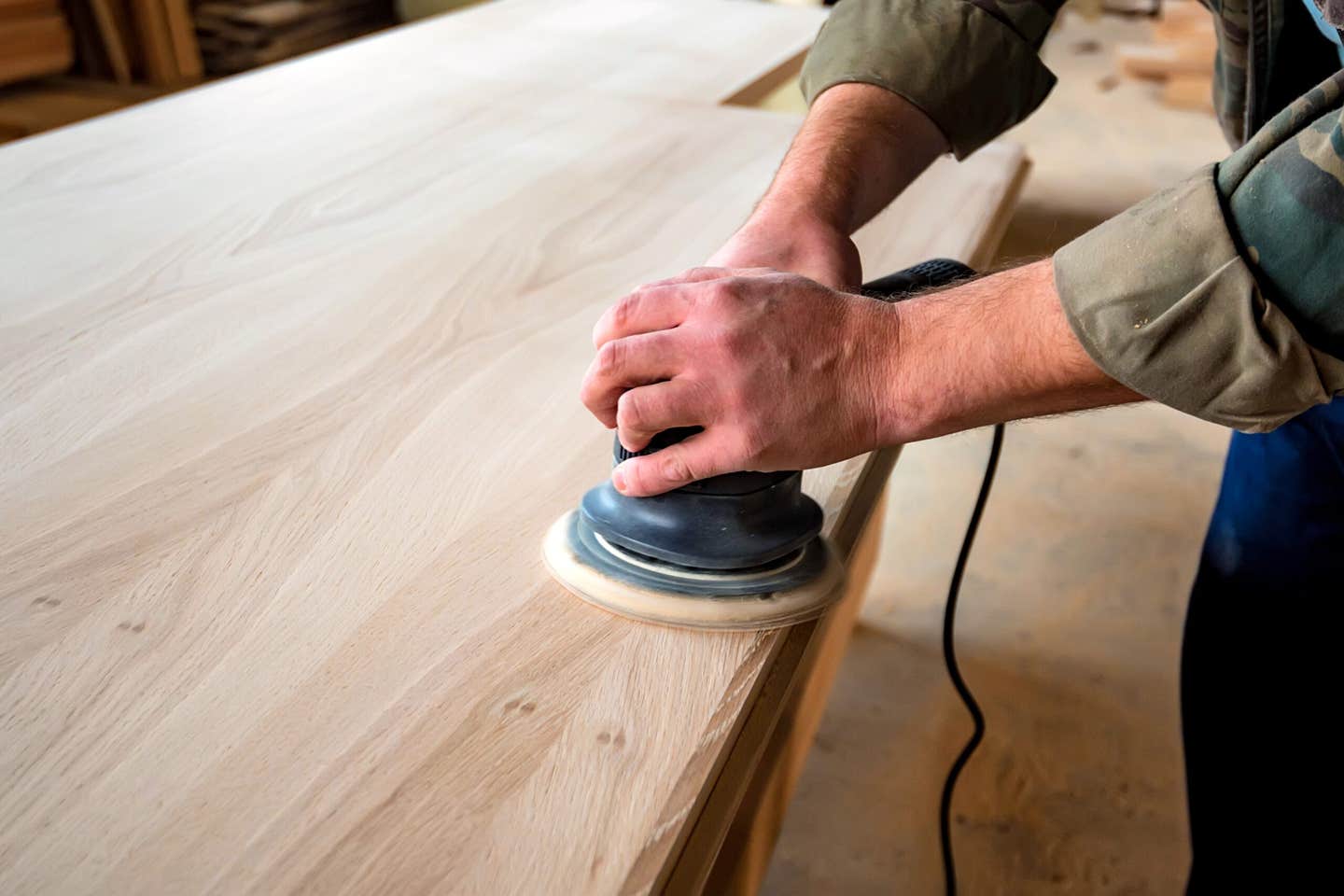Sanding solutions
Whether it’s the shape, pad, speed, power source or pattern, there’s a lot to keep up with when it comes to hand-held sanding options.
There are a lot of choices when it comes to portable sanders. First, there’s the shape – round, square, rectangular, triangular or belt. Next there’s the action – inline, circular (orbital) or compound with both circles and loops or ellipses (random orbit). The speed can be constant, or the tool might give you a couple of orbits-per-minute rates, or it can be variable speed. Then there’s the power source that is going to be either a battery or household current, or air.
When it comes to shape, the most popular round disc sanders are perfect for sanding panels and flat boards, but they can’t get into inside corners. So, when a woodworker is sanding inside drawers or cabinet subassemblies, there’s a dead spot in each corner that needs to be touched up manually with a block and sandpaper. It’s a good idea to do that first, so it can be blended into the disc sanded area.
A detail sander works on inside corners because it has a triangular-shaped pad with a point in front that’s less than 90 degrees so it can sneak into corners and leave a little space to maneuver. Square and rectangular pad sanders can reach most of the way into a corner, but they can damage the vertical sidewalls in less experienced hands. Disc sanders are usually more powerful and faster than square and rectangular models. Multi-tools often come with a sanding option that uses triangular sheets that work just like detail sanders. Makita recently introduced a new 12-volt polisher/sander (model VP01Z) that uses 2” diameter sanding discs for getting into corners.
There are sanding discs made for rotary tools that are less than an inch in diameter, but they can take a little practice to use. The body of the tool is often wider and touches the side of the drawer, so the disc can’t lie flat. Plus, some of them have a screw in the center of the disc. But between detail sanders, hand-held blocks and multi-tools, there are lots of differently shaped sanders to tackle tasks like this.
The need for speed
The optimum speed of any sander is going to be related to the grit of abrasive being used. In almost every situation, a woodworker will want to work down through several grits to eradicate scratches from the more aggressive grit that was just used, and not skip any. On variable-speed sanders, the fast speeds are more aggressive and slower speeds work best for a light touch with very fine grits.
Skipping grits is almost never a good idea on surfaces that will be stained or clear-coated. You might get away with a few shortcuts on paint-grade projects but it’s a good idea to experiment and preview the results before doing so.
Film-backed sanding discs are the best choice for a consistent and uniform finish, and they can last a lot longer than paper-backed ones. But the paper ones are often more flexible so they may be better for contours. Cloth-backed discs are mostly intended for coarser work and stock removal, while non-woven discs are perhaps the best choice for moldings and other shaped surfaces.
Small hand-held sanders offer the woodworker very efficient dust collection, especially of fines. The hole patterns for dust extraction are usually 5, 8 or universal such as 3M’s Clean Sanding systems. A shop vacuum attached to a random orbit sander will collect almost all the dust, and tools that come with a bag can usually be adapted to a hose instead.
Mirka, Uneeda and Festool have developed entire systems around the concept of dust-free sanding, where they have made impeccable connections between palm sanders and dust collectors or vacuums. The smaller the airborne particle, the more hazardous it is to your health. It’s the dust you can’t see that gets you.
New products
Battery-powered random orbit tools have reached the market, though the industry seems to be a little gray on the distinction here between orbital and palm sanders. Some manufacturers describe rectangular sanders as palm, which doesn’t seem very intuitive. Most users in the field think of palm sanders as smaller with square or round pads, and woodworkers generally describe small sanders as palm sanders whether they have orbital or random orbit action. If they’re not using discs, orbital sanders use half sheets of paper, while the palm sanders use quarter sheets. But the phrase “random orbit sander” has come to mean the small (palm-sized) round sanders that usually take 3” to 6” diameter hook-and-loop discs.
Round pad random orbit sanders from Festool (the company calls them eccentric sanders) now have an integrated sanding pad brake. Another innovative tool is the Makita XSB01, which is a mini detail belt sander that can reach into very tight spots.
3M offers pneumatic sanders with four different orbits: 3/32” for fine work; 3/16” for most common tasks; 5/16” for more stock removal; and a full 3/8” orbit for heavy stock removal.
For floor sanding, Norton says that its new ceramic grain sandpaper offers finer scratch patterns, longer lasting paper, and better cut rates. Called Red Heat, it’s the company’s fastest growing category of sandpaper.
SurfPrep offers aftermarket foam sanding pads for rectangular and detail sanders, plus both 5”and 6” orbital sanders, and they simply attach to the existing pad using with hook-and-loop.
There are currently several corded portable oscillating drum sanders that are sized and built for hand-held work, and these are especially helpful in tasks such as cleaning up live edges or removing burn from rounded inside corners. There are also several small sanding drums that mount on grinders and are used in welding, but they don’t oscillate.
Festool makes the LS 130 EQ-Plus, a linear detail sander that can reach into the grooves in moldings. Festool also has a new sanding guide for its palm sanders (item No. 205316) for sanding a perfect 90 degrees along the edge of a wooden countertop or panel.
This article was originally published in the November 2021 issue.







